Two ideas for you:
1: I think you can use the pyplot backend and pass the ticks yourself via colorbar_ticks as it looks like maybe the tick levels are just in the wrong place for log scaling (see here for an example: Modifying label and tick on color bar of Plots.jl plot) and that might fix the issue?
2: if you want to use the default backend (GR) then (as of this writing) you can't pass the ticks manually. To work around this, just take the log of your data! i.e. change your last line to heatmap(full_px, full_py, log10.(matrix), xticks=-4:1:4, yticks=-4:1:4, c = cgrad(:grayC)). Then the colorbar ticks will be in terms of log10 as well (i.e. -2 = 1e-2) so you just have to remember that. Here's a sample of what that looks like (here I made a meshgrid of the Normal distribution function since I don't have your data):

If (like me) you are annoyed with the lack of customization re: heatmaps and the colorbars, here's a fun example of some code I hacked together to "make my own" colorbar + do a discrete color scale, which produces this plot:

using Plots
f(x) = 1/√(2π)*exp(-1/2*x^2) #gaussian
x = range(-5,stop=5,length=1000)
y = f.(x)
mesh = y .+ y'
levels = [-0.1*i for i=0:10]
colors = palette([:white,:black],length(levels)-1)
clrticks = ["$(round(level,sigdigits=2))" for level in reverse(levels)]
n = length(levels)
yt = range(0,1,n)[1:n] #.+ 0.5/n add the half if levels are centered
xx = range(0,1,100)
zz = zero(xx)' .+ xx
p = plot(x,x,log.(mesh),seriestype=:heatmap,colorbar=false,c=colors,guidefont="Computer Modern",tickfont="Computer Modern")
p = plot!(title="",inset=(1,bbox(1/40,1/10,0.1,0.5)),titlefont="Computer Modern")
p = plot!(p[2],xx, xx, zz, ticks=false, ratio=10, legend=false, fc=colors, lims=(0,1),title="log10 f(x)",
framestyle=:box, right_margin=20*Plots.Measures.mm,seriestype=:heatmap,cbar=false,titlefontsize=10,titlefontcolor=:red,tickfontcolor=:red)
for (yi,ti) in zip(yt,clrticks)
p=plot!(p[2],annotations=(1.5,yi,text(ti, 7, "Computer Modern","red")))
end
display(p)



